And when you have invested your time and effort into something unique, whether it be handmade jewelry, eye-catching digital prints or boxes of one-of-a-kind vintage items, you are likely to be passionate about it. Etsy has been the most suitable place to realize that passion into a business to many of us. It is an online market where it feels like a large, vibrant craft fair, where we made our initial sale and were happy when someone purchased our piece.
However, Etsy is not everyone and not the only one. Your needs change as your business changes. Perhaps you are fantasizing about a storefront that truly reflects who you are, your own branding, your own rules and direct connection to your customers.
We will walk through the absolute best Etsy alternatives, walking you through the advantages and disadvantages in simple, easy to understand terms so that you can choose what is best suited to your creative adventure.
Why Look for Etsy Alternatives?
Etsy is wonderful to provide artists and makers with a launch. Nevertheless, people have real reasons to look over the fence and see whether the grass is greener on the other side.
- Prices continue to rise: There is the listing and transactions fees, payment processing fees, and the controversial offsite advertising fees. You pay a large percentage when Etsy automatically advertises your product and sells it. These fee layers are complex and can bite a surprisingly big chunk out of your final sale price, which makes it more difficult to price things competitively yet still make a good profit.
- Competition is massive: Millions of sellers have Etsy. That is millions of other stores competing to get the attention of the same customers. To stand out you need to know SEO well, have good photos and some luck. It can be like screaming into a hurricane to a new seller and it can be difficult to make your first few sales and get momentum.
- You have little branding and control: Selling on Etsy means you are building on their land. Your store exists within the Etsy ecosystem of branding, design and regulations. You will never be able to develop a really unique customer experience that is in line with the personality of your own brand. You are a seller on Etsy and second, your own brand.
- New policy developments appear: Etsy has the ability to modify its policies, algorithms and fee structures. These changes usually occur with little notice and can make a huge difference in your shop’s visibility and profitability. Such instability may be stressful to sellers who depend on the platform as a source of stable income.
A Quick Glance: Top Etsy Alternatives
| Platform | Best For | Pricing Starts From | Transaction Fees |
| Shopify | Building a serious, scalable brand with full control. | $29/month (after free trial) | 0% (with Shopify Payments) |
| Big Cartel | Artists and makers with smaller inventories. | Free (for 5 products) | 0% |
| Amazon Handmade | Crafters looking to tap into a massive customer base. | $39.99/month (waived if approved) | 15% referral fee |
| Squarespace | Creatives who want a beautiful, portfolio-style website. | $16/month (billed annually) | 0% (on higher plans) |
| Wix | Beginners who want an easy drag-and-drop website builder. | $27/month (for e-commerce) | 0% (Wix Payments) |
| IndieMade | Sellers who want a simple website that syncs with Etsy. | $4.95/month | 0% |
| Storenvy | Brands wanting both a marketplace and a custom store. | Free (for marketplace) | 15% marketplace commission |
| Aftcra | Sellers of 100% handmade goods made in the USA. | Free to list | 7% per sale |
| Goimagine | Handmade sellers who want their fees to go to charity. | $2.50/month | 3.5% + processing fee |
| BigCommerce | Growing businesses that need advanced e-commerce features. | $29/month | 0% |
10 Best Etsy Alternatives for Sellers
So how about a closer look at each of these etsy alternatives?
1. Shopify
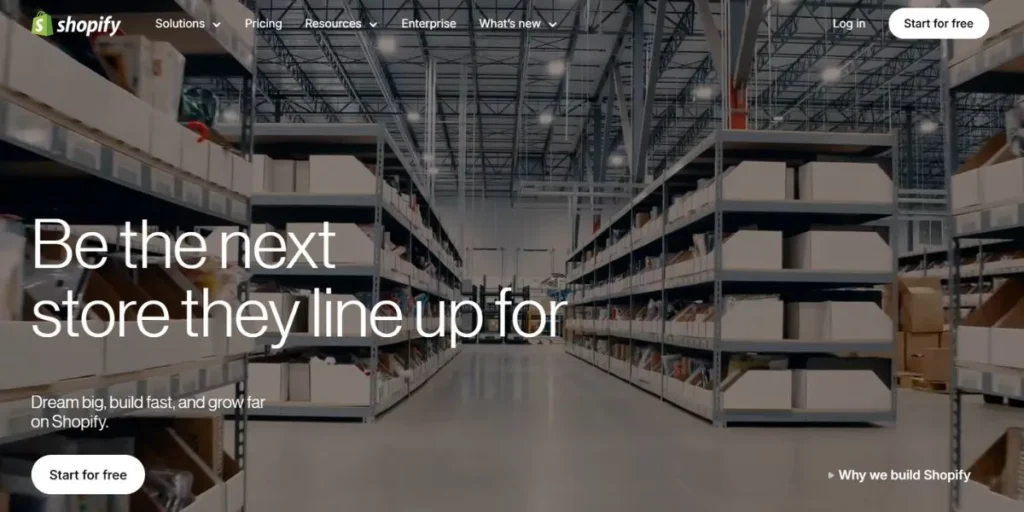
Shopify is not a typical online market. It is your little piece of the internet. Imagine that you rented a gorgeous, vacant storefront in a great location and you have complete freedom to design it. Shopify is one platform with the capability to create, control, and develop an online store. You have all the control- branding, customer experience, and all details of the websites.
It is designed to grow, it scales with you as you go between the first sale to the millionth. You have to carry your own customers, but you get unmatched control. Shopify is connected to social media and email marketing, it is a real command center of your business and the best option of serious entrepreneurs.
Pros:
- Full Control: You have your own site. You make design, layout and customer journey decisions.
- Good Branding: Build a brand that customers will want to revisit and will remember, without your branding getting lost in the Etsy branding.
- Scalability: Shopify supports businesses of all sizes and there are thousands of apps to extend functionality as you scale.
- No Marketplace Fees: You do not pay any additional fees on top of the normal payment processing fees.
Cons:
- You Are the Traffic: Shopify does not come with an inbuilt audience like Etsy. You will be 100 percent responsible for marketing and getting customers to your site.
- Monthly Subscription: It has recurring monthly subscription, which may be a challenge to a beginner.
- It can be Overwhelming: There are so many features and apps that the initial set up can be more complicated than a basic Etsy listing.
Also Read: Best Shopify Alternatives in India
Why Choose This: Pick Shopify when you mostly want to create a sustainable, scalable brand.
Best For: Serious sellers who want to create a professional, independent brand.
Pricing: Plans start at $29/month. You’ll also pay standard credit card processing fees.
2. Big Cartel
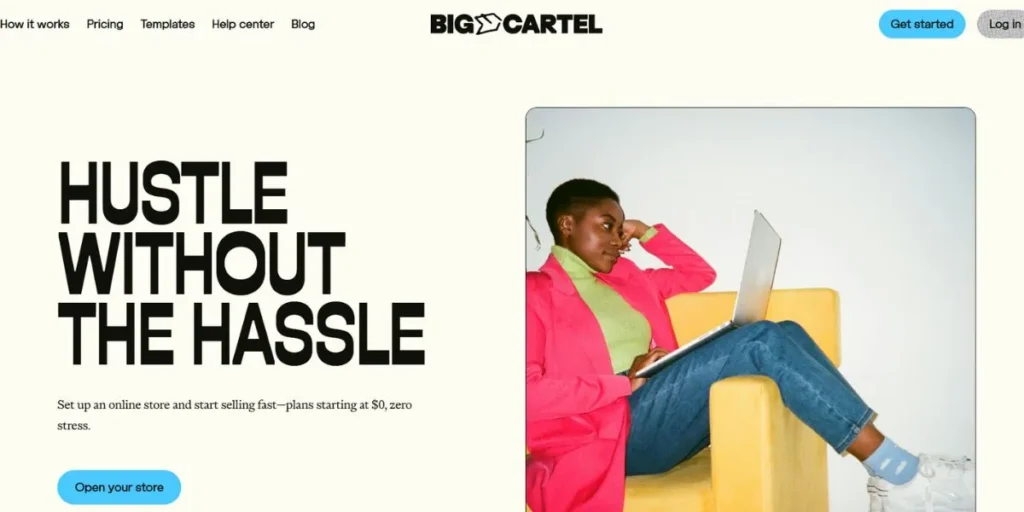
Shopify is similar to constructing a large departmental store. Big Cartel is similar to opening a cool, boutique pop up store. Big Cartel is an artist-built, artist-driven storefront and its design reflects that artist-first approach in its clean, minimalistic layout. It is very easy to use and aims at providing makers, designers, and musicians with an easy means of selling their work online without much ado.
As one of the best handmade marketplace alternatives, it does not have a million features you will never use. Rather, it gives you the necessary tools that you require to have a beautiful and simple shop online within a short time. Big Cartel is ideal when you have a small, carefully selected range of products that you do not require a large e-commerce platform to run.
Pros:
- Free Plan: Start with up to 5 products and it is ideal to test the waters.
- Very Easy to Use: The interface is clean, simple and intuitive. It takes you a few minutes to get to the shop.
- Designed by Creatives: The templates and the overall design are created to appeal to artists and makers.
- No Transaction Fees: Big Cartel does not cut a percentage of your sales no matter which plan you are on.
Cons:
- Few Features: The free version is very simple and even the paid ones do not offer the advanced inventory and marketing features of sites such as Shopify.
- Not Suitable to Large Inventory: It is also suitable to sellers with few and manageable products.
- You Still Have to Market: It is a stand-alone store and as such, you have to market it like Shopify.
Why Choose This: Pick Big Cartel when you are creative and you need a simple, stylish and cheap place to put your products.
Best For: Artists and makers who have few products and desire an easy, beautiful web store.
Pricing: Free plan for up to 5 products. Paid plans with more features start at $9.99/month.
3. Amazon Handmade
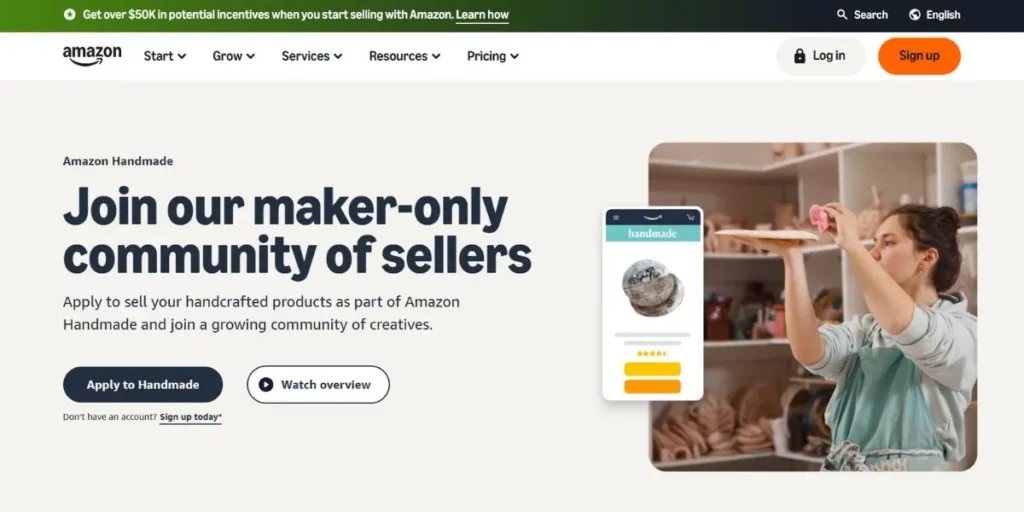
Just imagine that you have a stall with your handmade items in the largest and the busiest mall in the world. Selling on Amazon Handmade is such. It is the niche of Amazon, where really handmade products are sold, and it is intended to compete with Etsy competitors. In order to sell here you must apply and prove you, or your small team, produce the items yourself—this keeps the marketplace honest.
The greatest advantage is that it provides immediate access to the large global customer base of Amazon, i.e. people who are already on the site and ready to spend their money with credit cards in hand. When people are able to find your products via Amazon search, your prospect of making sales skyrockets.
Pros:
- Huge Audience: You get access to hundreds of millions of customers on Amazon.
- Trusted Platform: Amazon is trusted by the shoppers and they feel comfortable making purchases at Amazon.
- Fulfillment by Amazon (FBA): You may apply FBA to make Amazon store, pack and ship your products, which saves much time.
- No Listing Fees: You pay only when you sell.
Cons:
- High Commission Fees: 15 % referral fee per sale is way too high compared to that at Etsy.
- Rigorous Application Procedure: You must be accepted, and not all are accepted.
- Weaker Brand Identity: You sell on the platform of Amazon, with its branding and design, thus it is more difficult to create a unique brand identity.
Why Choose This: Pick Amazon Handmade when you want to prioritize your sales volume and the maximum audience reach.
Best For: Experienced crafters who are able to do high volume and have a desire to reach the huge customer base of Amazon.
Pricing: The $39.99/month Professional selling plan fee is waived for approved Handmade sellers.
4. Squarespace
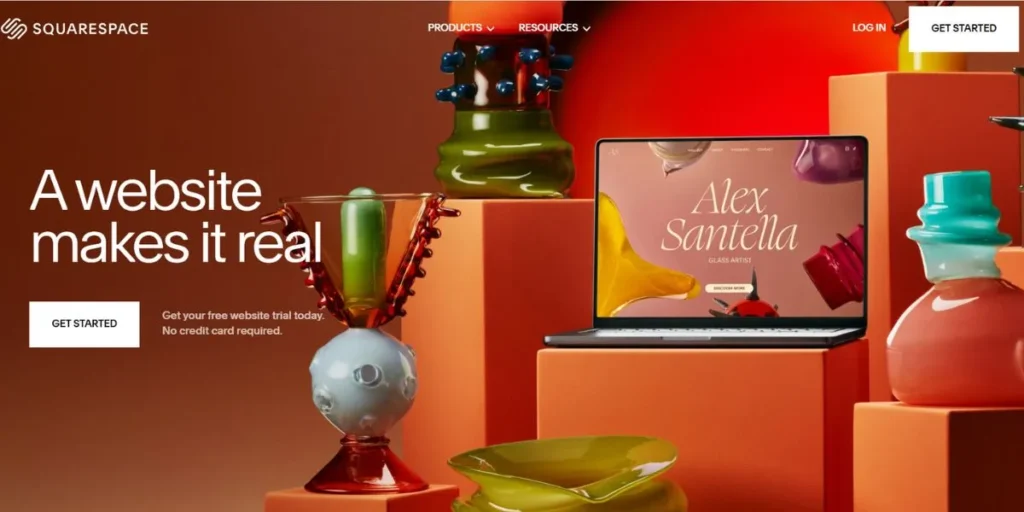
Squarespace assists sellers who are bothered about presentation. It is known by its award winning, stylish templates that makes your products and your brand look very professional immediately.Squarespace started as a portfolio and blogging website builder, so its heart is in beautiful design and compelling storytelling through images.
That is why it is ideal among artists, photographers, designers and brands where appearance is everything. You have the ability to add a blog, a portfolio, and an online store all in one location- without having to construct various components independently of each other.
Pros:
- Beautiful Templates: The most excellent templates.
- All-in-One Platform: Blogs, portfolios and e-commerce go well together.
- Easy to Use: The drag and drop editor can be learned easily.
- No Transaction Fees (on higher plans): You do not have to pay an additional fee when you exceed the Business plan.
Cons:
- Limited E-commerce Apps: Squarespace has less e-commerce third-party tools than Shopify.
- Transaction Fee on Basic Plan: The basic plan, which is the Business plan, charges a 3 percent transaction fee.
- It is a Little Constraining: The template system is basic and does not allow extensive customization as Shopify.Why use this?
Why Choose This: Choose Squarespace when you want the visual appearance of your brand to be your first priority.
Best For: It is most suitable to the creatives, designers, and bloggers who desire visually appealing, portfolio-type site with e-commerce.
Pricing: E-commerce enabled plans start at $23/month (billed annually).
5. Wix
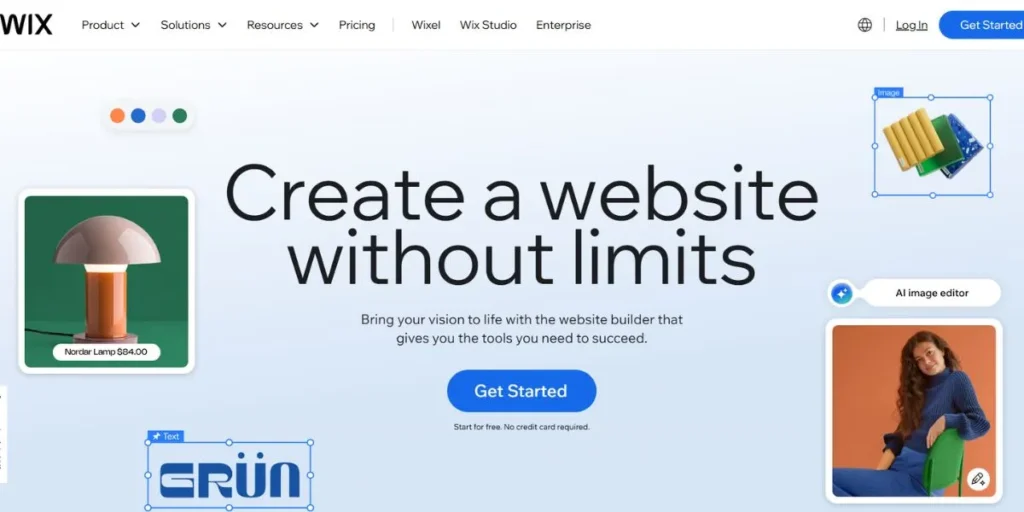
Wix is a site builder that is aimed at beginners who desire to have maximum creative freedom. It is well known because of the drag-and-drop editor, which allows you to drag any element on the page to a new location. The changes are visible immediately and thus no code is required to be written. Wix offers hundreds of templates to help you get started and includes powerful e-commerce features, including secure payments, inventory management, and shipping, making it a great handmade marketplace alternative for creators who want to sell their products online.
Pros:
- Ultimate Design Flexibility: The drag-and-drop editor allows you precision over the design of your site.
- Extremely Newbie Friendly: It is one of the most simple to use and learn.
- Massive Template Library: Hundreds of professionally designed templates of all kind of businesses.
- Extensive Features: It has a broad selection of in-built marketing, SEO, and store management tools.
Cons:
- You cannot change templates: You can not swap out templates after you select one and create your site.
- Has the Potential to Feel Slow: The editor and live sites may feel a tad slower than the competitors because of the code it produces.
- Risk of Analysis Paralysis: There are too many choices which in certain cases can be confusing to a novice.
Why Choose This: Use Wix when you are a newbie and you want as much creative freedom as possible and a simple to use editor.
Best For: Suitable to beginners and small businesses, who need a simple, highly customizable drag-and-drop website builder.
Pricing: E-commerce plans start from around $27/month.
6. WooCommerce
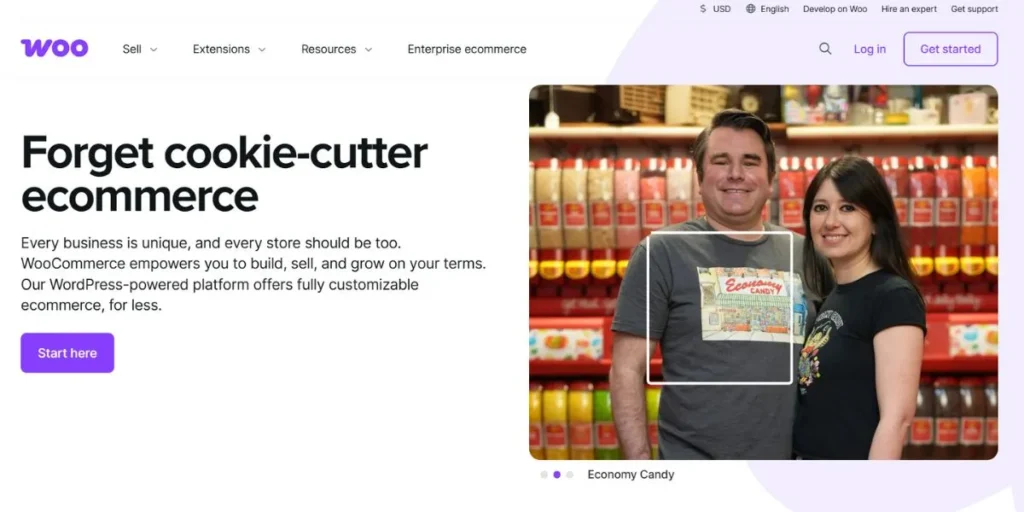
Shopify is similar to leasing a shop. WooCommerce is the equivalent of having your own personal toolbox to construct your own store on a property you already possess. WooCommerce is a free, strong plugin, and not an independent platform. It makes any WordPress site a complete e-commerce store with unprecedented freedom and control.
You will take care of web hosting, security, and updates, but you can design everything about your shop, including the layout of product pages and the checkout procedure. This is the DIY solution to sellers who would like to put themselves in the driver seat.
Pros:
- Full customization: WooCommerce is open-source and based on WordPress, which means that the design and functionality options are practically unlimited.
- You possess all of it: You own your site and data. You cannot be taken hostage by changes to the rules of the platform or fee increases.
- There are no platform fees: WooCommerce is free. The only recurring expenses you have are the cost of hosting a web site, domain and any premium plugins or themes you purchase.
- Scalability: WooCommerce is capable of managing a small number of products to thousands.
Cons:
- Steeper learning curve: You have to deal with your own WordPress site, including hosting, security and updates. This is less of an all-in-one platform.
- Self-management is required: You are the IT department. When something breaks you or someone you pay will need to fix it.
- Scattered support: You have support provided by your hosting company, the theme developers and the plugin authors.
Why Choose This: WooCommerce is the best option when you need complete control over the operation of your store and feel confident with the technical burden of running a WordPress site.
Best for: Geeky merchants and business owners who desire a potent, customizable store with no monthly platform charges.
Pricing: The plugin is free. Costs include web hosting (starting around $5-$30/month).
7. Square Online
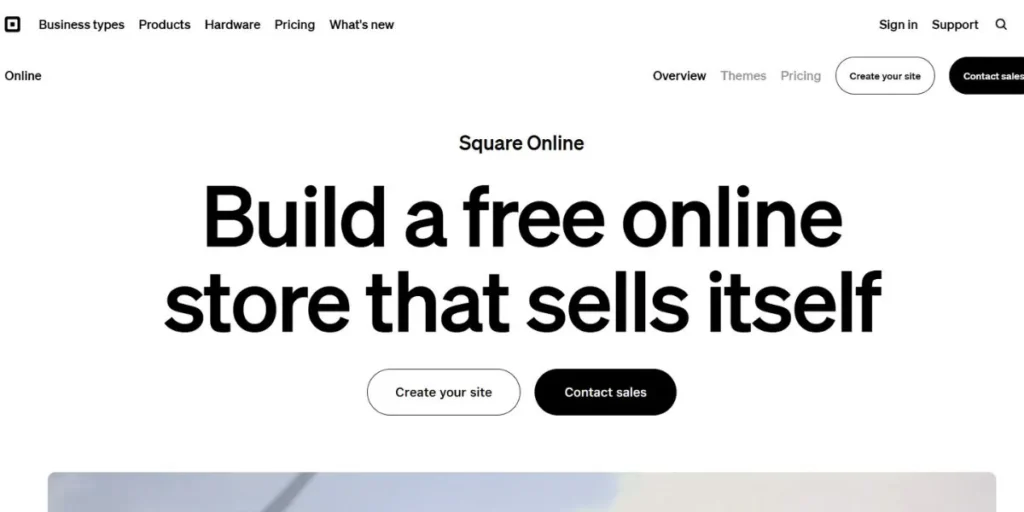
Consider Square Online as an online equivalent of a successful booth at a local craft fair. It is the product of the payment company Square and is designed to allow you to begin selling online quickly and simply, and to tie in seamlessly with in-person transactions. This is the logical progression if you already use a Square reader at craft fairs or pop-up shows, making it one of the top Etsy alternatives for small makers and artisans.
All this, such as inventory, sales and customer information, stays in sync between your online store and your physical point-of-sale, so you have one integrated system.
Pros:
- Wonderful in-store: A+ integration with Square Point of Sale devices and software. Your stock is current at all times.
- Free plan: You can open a functioning online store and pay no monthly fee as long as you pay payment processing fees on the sale.
- Simple to set up: The site creator is straightforward and user-friendly, and therefore you can have a store up and running in under an hour.
- Integrated features: It has features of local delivery, in-store pickup, and appointment booking.
Cons:
- Limited design choices: The designs are limited yet they do not offer the creativity choices of platforms like Wix or Squarespace.
- Reduced advanced functionality: No huge app store and extensive e-commerce capabilities of a service such as Shopify.
- Best in the Square ecosystem: You can use other payment processors but the system works best when you use Square everywhere.
Why Choose This: Choose Pick Square Online when you sell online as well as in store and you need an easy, integrated system to run your business.
Best for: Crafters, artists, and small businesses who attend markets and fairs or have a brick-and-mortar store.
Pricing: Paid plans with more features and a custom domain start at $29/month (billed annually).
8. Goimagine
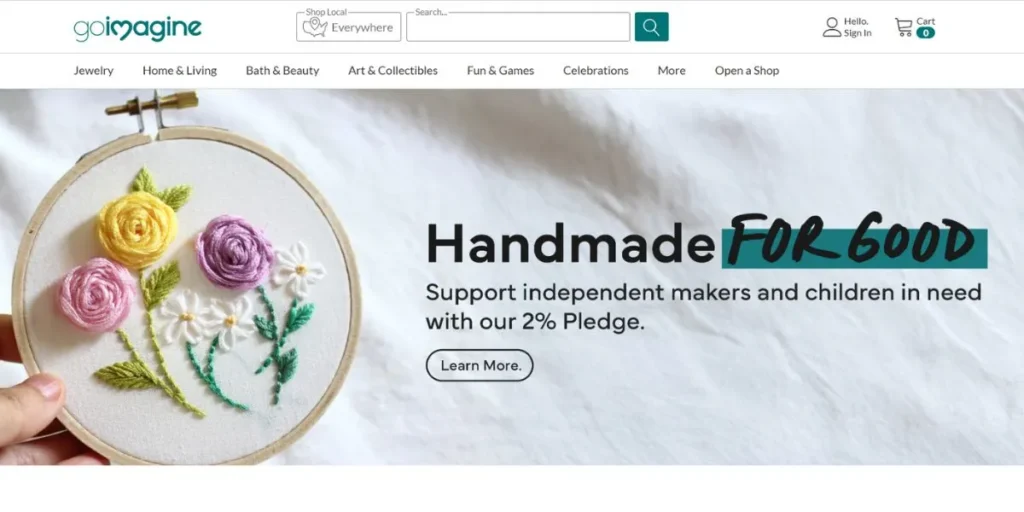
Goimagine is a juried craft fair. It is a marketplace designed to be the “caring alternative to Etsy.” It has two principal regulations: all products should be handcrafted by the artists based in the US and all the profits of the platform should be given to children’s charities. Such regulations establish a powerful sense of community and common values. Goimagine avoids mass-produced or resale items, which helps it maintain the real, handmade experience that many sellers and buyers believe is lost on larger platforms, making it a strong handmade marketplace alternative.
Pros:
- Truly Handmade Focus: The marketplace is not flooded with resellers and mass-produced goods because of a stringent application process.
- Ethical Mission: It is a huge selling point that the platform fees go toward charitable causes to both sellers and buyers.
- Lower Transaction Fees: The sales commission on the platform is much lower than it is on platforms like Amazon Handmade.
- Community-based: Being a smaller, mission-based platform, it is very community-oriented and creates a sense of community among its sellers.
Cons:
- Significantly Less Traffic: It is a newer site and does not have even close to the traffic of Etsy or Amazon. You will have to engage in more outward marketing.
- US-Based Sellers Only: At the moment, the platform is available to makers only in the United States.
- Growing Pains: It is a newer marketplace and may not have all the polished, advanced seller tools of the larger competitors.
Why Choose This: Goimagine is your marketplace of choice when you want to sell on a marketplace of handmade goods and which reflect your ethical values.
Best For: Artisans based in the US and who desire a handmade-only community and are supportive of the charitable mission of the platform.
Pricing: Plans are subscription-based, starting at $2.50/month, plus transaction fees on each sale.
9. eBay
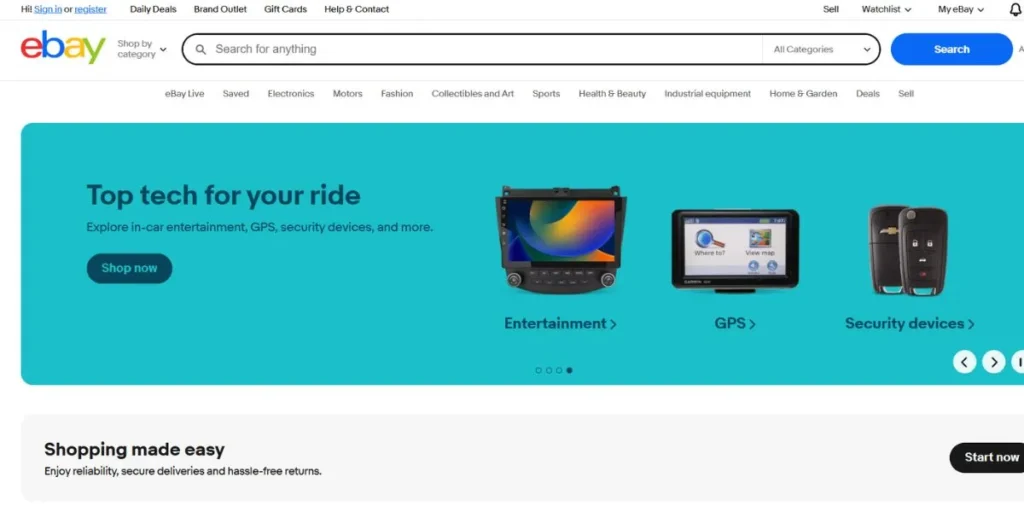
eBay opened the first online auction house and it has now become a global bazaar. Whereas Etsy resembles a well-chosen craft fair, eBay is an equivalent of the biggest and most diverse flea market in the world. It is a powerhouse of not just handmade items but more so vintage items, antiques, collectibles and unique used items. There are millions of active users, who search the site to find special finds that are not available elsewhere. You may list items at a fixed price using the Buy It Now option, or you can do the traditional auction-style to generate enthusiasm and perhaps increase the final bid.
Pros:
- Huge world market: eBay has billions of searches, which provides your items with unbelievable exposure.
- Perfect with Vintage and Antiques: eBay is the place that many buyers visit when they need vintage, collectible, and secondhand products.
- Versatile Selling Formats: You have the option of auction-style listing or fixed-price listings, to provide more selling options.
- Established and Trusted: It is one of the oldest and most known names in e-commerce.
Cons:
- Great Competition: You are also competing against millions of other sellers worldwide, whether individuals or large companies.
- Complicated Fee Structure: Fees are complicated, and they include insertion (listing) fees, final value fees, and optional upgrade fees.
- Less Brand-Centric: It is more difficult to create a brand identity on eBay. More emphasis is made on the product listing than the shop of the seller.
Why Choose This: Use eBay when you have vintage, antiques or collectibles to sell and you want to reach a massive ready-made base of treasure hunters.
Best For: Vintage clothes, antique, collectible and special second hand sellers.
Pricing: You are provided a fixed amount of free listings in a month and then you are charged an insertion fee.
10. Instagram Shopping
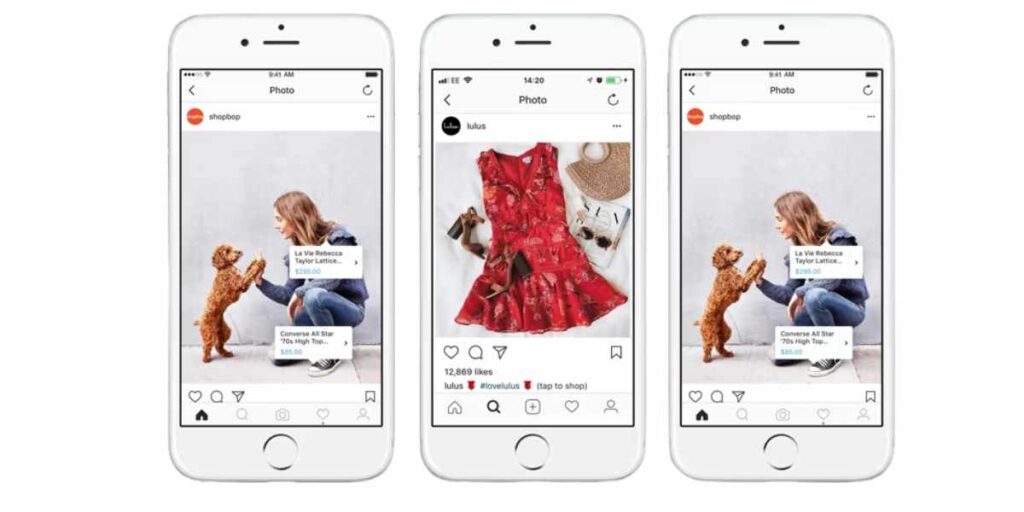
Instagram Shopping is not a new marketplace or a site builder. It allows you to turn your Instagram profile into a store by adding price labels to photos, videos and Stories. When a follower clicks on a tagged product, they will be able to view the price and information and can then use your site to purchase the product or via Instagram through the Meta checkout. It turns your visual portfolio into an interactive catalog, and it finds your audience where they already find you.
Pros:
- Visual: Instagram is ideal to use with products that are more visual such as art, fashion, jewelry and home decor.
- Minimizes purchase friction: Tap-to-buy allows one to go directly from discovery to purchase, which is ideal in capturing impulse purchases.
- Free to use: You do not pay to enable Instagram Shopping or to tag products; you only pay typical payment processing fees on purchases.
Cons:
- Reliant on Meta: The visibility of your store depends on the algorithm of Instagram. You do not own the platform.
- Not a focal point: It is not a stand-alone site or place of your brand. It is more effective as a sales channel connected to an existing e-commerce store.
- Attention is divided: Customers are using a social media app, and they can be easily distracted by some other post or notification.
Why Choose This: Instagram Shopping is best used when you have a visual brand, and a social media following that you can convert to direct sales.
Best for: Brands and creators that are visually oriented, and that are already present on Instagram.
Pricing: Free to install. You incur payment processing fees (usually 2.9% + $0.30 per transaction) on sales that occur via the integrated checkout.
5 Etsy Alternatives for Artists
Are you a painter, illustrator, photographer or printmaker? You may desire a special site just right for you. Most of these sites also have print-on-demand services integrated in them so you can sell your work without having to hold an inventory.
- Big Cartel: Big Cartel is an artist-run artist store. It has a clean and simple design, and would be ideal to exhibit a small amount of original work or prints.
- Saatchi Art: Saatchi Art is a curated online art gallery at the high end. It is serious fine artists who wish to sell original paintings, sculptures and drawings to a global market of collectors. Consider it as a gallery, and not a craft marketplace.
- Society6: Society6 is ideal in case an artist wants to sell his/her designs on a wide range of products without having to keep inventory. You post your artwork, and Society6 prints, ships and does customer service on items like art prints, phone cases, furniture and apparel.
- Redbubble: Redbubble is similar to Society6. It is a huge print-on-demand marketplace with a huge worldwide market and allows you to choose your own profit margins. It is an excellent means of passive income selling your designs on more than 60 products.
- DeviantArt: DeviantArt is one of the oldest online art communities. It assists artists to interact and share their art. It also allows you to sell prints and digital downloads to an inbuilt audience of art lovers.
Free or Low-Cost Etsy Alternatives
You do not have to have money to start selling. Listing and selling your products is possible with the help of everyday tools.
- Facebook Marketplace / Facebook Shops: Facebook is the biggest social network. You are able to link a Facebook Shop to your business page and transform that page to a digital store. Put tags on products in your posts and stories and followers can purchase them without leaving Facebook. Facebook Marketplace is excellent in local sales. You are also able to list items with local pickup avoiding shipping costs and fees. It is a low risk method of testing a product idea and making your first sales.
- Instagram Shopping: Instagram is a strong selling platform in case your brand is visual. Installing Instagram shopping, you make your feed a clickable catalogue. Attach product tags to photos, videos and stories. When a person scans a tag, they view the price and information and tap to purchase on your site (or via Instagram Checkout in certain markets). This channel redirects traffic to your actual online store and it is free and necessary to modern makers.
Conclusion
Etsy remains a good start to many creators. It is a vibrant community and assists individuals to transform an idea of creativity into reality. But the path of everybody is different. What is working now, may not suffice tomorrow.
Shopify may be a good choice, in case you desire complete freedom and obvious controls. Big Cartel might be suitable, in case you want a clean artistic look and feel. An alternative is Amazon Handmade in case you require a massive audience. You have a platform somewhere.
Your first step is the best one you are taking now: reading, learning, thinking about what your brand requires. Discover, innovate and develop a company that is truly yours. You are able to do this!
FAQs
Can you sell on Etsy and a different site?
Yes! Selling at several platforms, including Etsy and your personal Shopify store, you spread your income and make your business more sustainable.
What is the Etsy alternative that is the cheapest?
The least expensive solution is Big Cartel free plan that supports up to 5 products and is suitable when a standalone shop is required. The Facebook Shops or Instagram Shopping is a wonderful choice when it comes to zero-cost selling.
Can I create my own site using something like Shopify or Wix?
Not a bit of it! The platforms are aimed at individuals who do not know how to code. You can make a professional-looking store in a weekend with user-friendly templates and drag-and-drop editors.
Will I lose all my customers on Etsy by moving?
No, provided you make your transition carefully. Be sure to actively tell your customers about your move and provide them with a good incentive (such as a special discount) to come with you to your new site.
 Get 50% off on Vault theme. Limited time offer!
Get 50% off on Vault theme. Limited time offer!